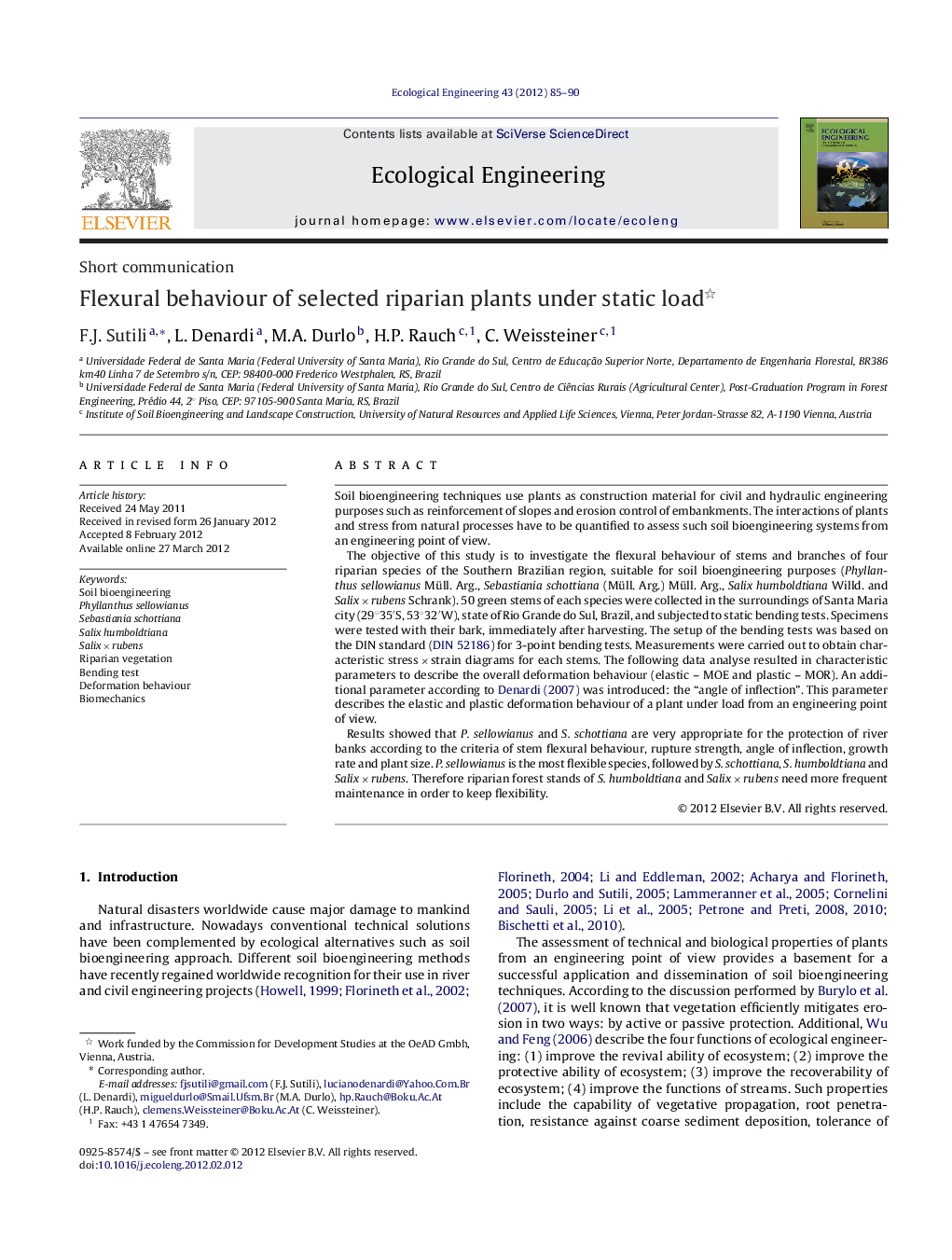| Article ID | Journal | Published Year | Pages | File Type |
|---|---|---|---|---|
| 4390065 | Ecological Engineering | 2012 | 6 Pages |
Soil bioengineering techniques use plants as construction material for civil and hydraulic engineering purposes such as reinforcement of slopes and erosion control of embankments. The interactions of plants and stress from natural processes have to be quantified to assess such soil bioengineering systems from an engineering point of view.The objective of this study is to investigate the flexural behaviour of stems and branches of four riparian species of the Southern Brazilian region, suitable for soil bioengineering purposes (Phyllanthus sellowianus Müll. Arg., Sebastiania schottiana (Müll. Arg.) Müll. Arg., Salix humboldtiana Willd. and Salix × rubens Schrank). 50 green stems of each species were collected in the surroundings of Santa Maria city (29°35′S, 53°32′W), state of Rio Grande do Sul, Brazil, and subjected to static bending tests. Specimens were tested with their bark, immediately after harvesting. The setup of the bending tests was based on the DIN standard ( DIN 52186) for 3-point bending tests. Measurements were carried out to obtain characteristic stress × strain diagrams for each stems. The following data analyse resulted in characteristic parameters to describe the overall deformation behaviour (elastic – MOE and plastic – MOR). An additional parameter according to Denardi (2007) was introduced: the “angle of inflection”. This parameter describes the elastic and plastic deformation behaviour of a plant under load from an engineering point of view.Results showed that P. sellowianus and S. schottiana are very appropriate for the protection of river banks according to the criteria of stem flexural behaviour, rupture strength, angle of inflection, growth rate and plant size. P. sellowianus is the most flexible species, followed by S. schottiana, S. humboldtiana and Salix × rubens. Therefore riparian forest stands of S. humboldtiana and Salix × rubens need more frequent maintenance in order to keep flexibility.
